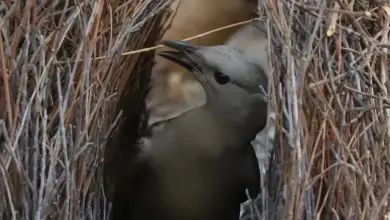Corsican Nuthatches
The Corsican Nuthatches (Sitta whiteheadi) are endemic to Corsica, where it is rare and endangered, with a population of only about 2,000 still having survived. They are threatened by habitat destruction by fire and predation by Great Spotted Woodpeckers.
Distribution / Range
The Corsican Nuthatches (Sitta whitehead) is endemic to the pine forests of Corsica, an island in the Mediterranean Sea. It is found only on that island and is not believed to be endangered. It relies on the Corsican pine tree, an endemic tree, for nesting – favoring very old trees aged 300 years or more. It is the only species of Nuthatch on the island.
The Corsican Nuthatch is a resident (non-migratory)
Diet / Feeding
The Corsican feeds on insects and seeds, usually those found in the pine trees. It will catch its prey on the fly as do some of the other Nuthatches.
Description
It has the ability, like other nuthatches, to climb down trees, unlike species such as woodpeckers which can only go upwards, and will also flycatch.
The Corsican Nuthatch measures 4.75 inches or 12cm in length. It is a tiny, slender bird with a long, thin bill and elongated head. Its upperparts are blue-grey, and its underparts are a pale grey-white moving to buff on the flanks and belly. The sides of the head and throat are white.
Its tail is short, unlike many other species in the genus, Sitta. The tail feathers are black with pale grey tips; there are white patches at the ends of the feathers
They both have a prominent supercilium, running from the beak, above the eye, and to the base of the crown.
The male can be identified by his black crown and eyestripe separated by a white supercilium (line above eye).
The female has a grey crown and eyestripe. Her markings are less distinct.
The juvenile’s markings and colorings are similar to the adults, but the colors are not as bright, and the tips of the feathers are a light brown.).
Breeding / Nesting
This territorial Nuthatch prefers extremely old Corsican pine trees in which to build its nests. It will build its nests in holes it excavates in the old-growth pines. The female will lay 5 to 8 white eggs, and they are speckled with a reddish hue.
Calls / Vocalization
The Corsican Nuthatch’s call is a whistle that sounds like “pu” and is often heard as a series of quick, trilled repetitions—“pupupupupupupu.” It can be heard as the bird prepares to fly and during flight. He sings in a clear, high-pitched voice, and the song is “hididididid.”
Information provided by: Avian Contributor: Jeannine Miesle.


